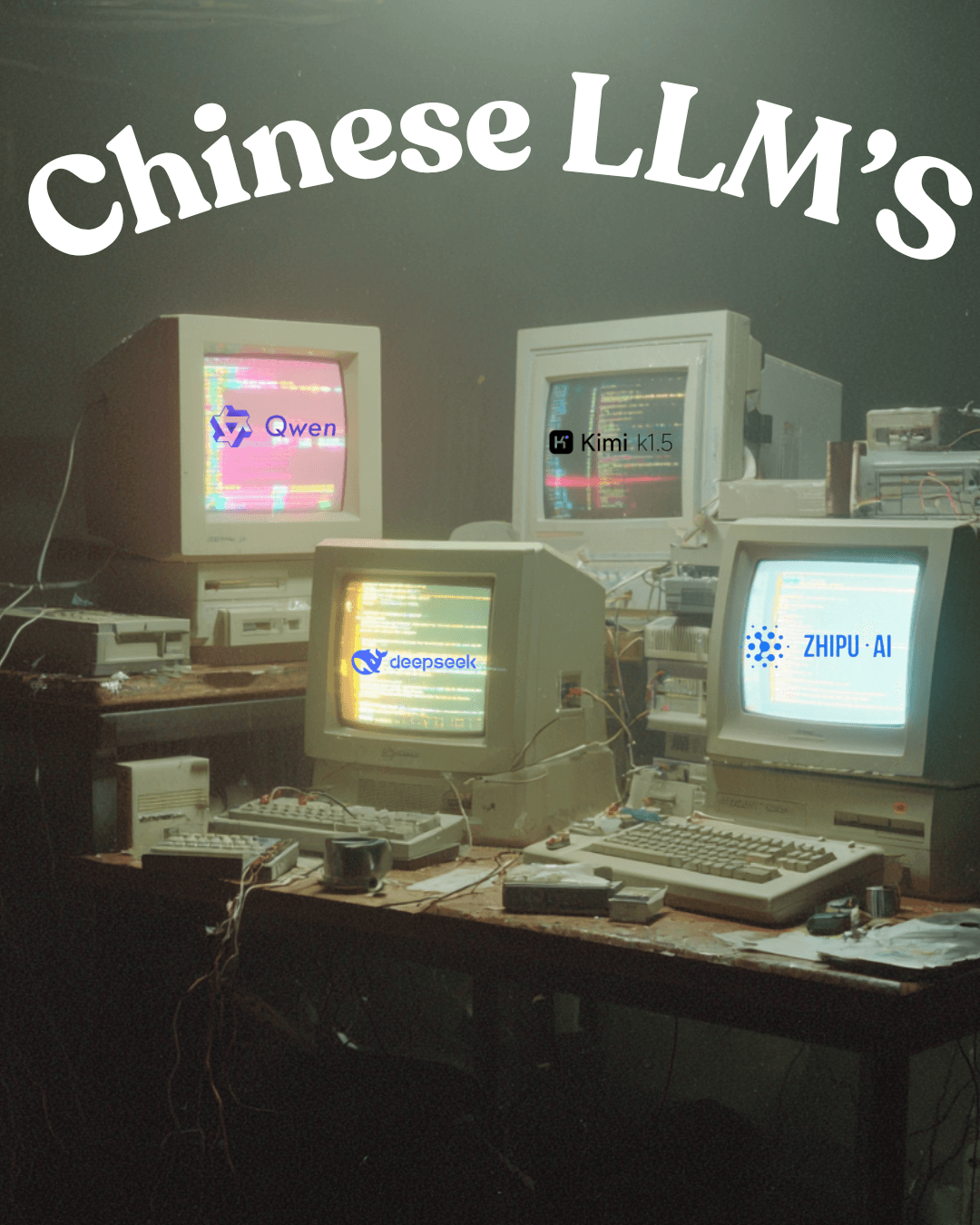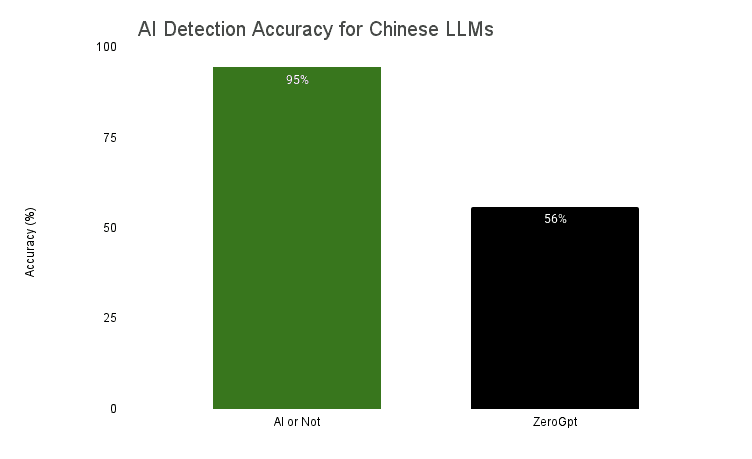AI Detector Accuracy for Chinese LLMs: AI or Not vs ZeroGPT
Does your AI detector check for Chinese LLM too?

Deepseek, Kimi, Qwen and Sonoma sky Alpha what do they all have in common? They’re all China Based LLM’s. Most AI detectors have trained on US based writers such as ChatGPT and Claude. But LLMs are being created from around the world, especially ones coming from China.
Is your AI checker able to detect text coming from US and Chinese LLMs?
AI Detection Accuracy Case Study: AI or Not vs ZeroGPT
If you're a student, you may have a completely different style than say a journalist. To check for AI, we prompted Chinese based AI tools to write in different styles. We then pinned ZeroGPT against AI or Not to determine to analyze text produced and whether it was written by AI. We tracked which content is flagged as AI-generated and which each AI content detector (incorrectly) thought was human-written text.
We examined 95 different writing examples with known origins, made by artificial intelligence, including essays, personal statements, professional emails and research papers to determine the accuracy rate: 95% for AI or Not vs 56% for ZeroGPT. Here is the raw accuracy data as well.

As AI and LLM continue to evolve, it’s becoming increasingly important to understand all the implications of relying on machine generated text in academic, professional and research settings. This growing challenge has accelerated the need for reliable AI detection tools such as AI or Not to distinguish between Human written and AI generated content.
The results and finding go beyond just comparing these two tools. It highlights a broader issue within AI detector tools. As China dominantly pushes advanced AI and rapidly takes up space in the LLM field with open source innovation many AI detection companies face a critical question. Can they accurately distinguish and identify the outputs from China based models? This has a real implication for students, teachers, researchers and corporations relying on tools like AI or Not or ZeroGGPT to verify content authenticity. The format and sentence structure may differ enough from Gemini to Qwen to affect accuracy rate.
How do AI detectors work?
AI detectors are models trained on huge bodies of AI generated and also human-written text. By comparing both the fake version and human-written content, the models are able to find patterns and signs that indicate whether the text was written or created by AI. The key is that the checkers are trained on a variety of different content types and different models, domestically and internationally. When you use these tools, you then get back a probability percentage known as the confidence score on how likely the text is AI-generated. Detectors like AI or Not And ZeroGPT are trained on a diverse array of content, including text from numerous models like ChatGPT, Claude, Llama and many more. But now it is important that models are trained not only on US based LLMs but China based ones such as Deepseek and Qwen. Just a ChatGPT detector is no longer enough to accurately detect AI-generated content.
How We Calculated the Detection Results
We ran 95 different AI generator prompts created by China based LLM’S to test the accuracy, but also the potential false positive rates that can occur when using or working with AI detectors. The testing material includes a wide range of writing skills and styles for middle school essays, research papers, and PhD level articles. This case study was conducted using China based LLM’s, such as Deepseek, Kimi, Qwen, Sonoma Dusk Alpha, Sonoma Sky Alpha, and Moonshot. You may also ask yourself why we use China based LLM‘s? Those models typically open source, allowing others to easily build on top of these; instead of machine learning models trained from scratch, developers are turning to free access models for their use of AI. .
Why China LLMs
China has made it a point to compete in the AI race. They have also made a point make their AI technology open source, meaning all of the code is transparent and fully available to developers. This has pushed more usage to their homegrown models and AI writing tools. Seeing this trend, and as AI or Not continues to be the best AI detector, its been important to train against content from a variety of sources and countries
What’s the Impact on Users of AI Detection Tools?
AI detection tools that fail to spot China-based LLM outputs create major problems for students, researchers, teachers and working professionals who depend on them. The incorrect identification of text by AI systems produces multiple negative effects which harm students through unfair penalties and enable AI-generated content to be mistaken for human work thus damaging academic honesty. Teachers are at a disadvantage is if their blind spot for an AI essay is the 2nd largest country, by population. Lecturing students "Don't use AI" becomes impossible to enforce if you're just checking if something generated by ChatGPT while not being able to correctly identify AI-generated content from any chabot in the Eastern Hemisphere.
AI or Not: Your AI Checker To Detect AI
Need a detector tool for free? One that provides AI content detection written by tools like ChatGPT but also comprehensively covering those coming from China?
AI or Not is a multi-modality AI checker that covers text, image, audio, deepfakes and video.
The tool provides full transparency via a confidence score and is among the verification tools analyze patterns to tell you the truth: when something is generated by AI.